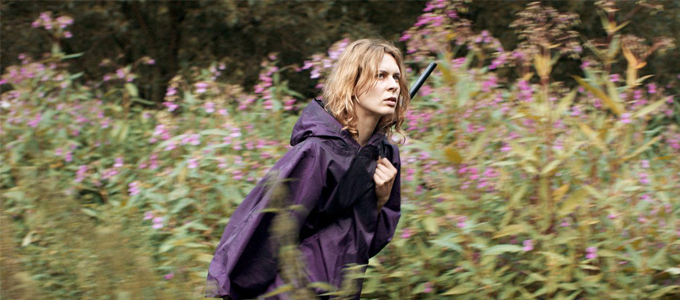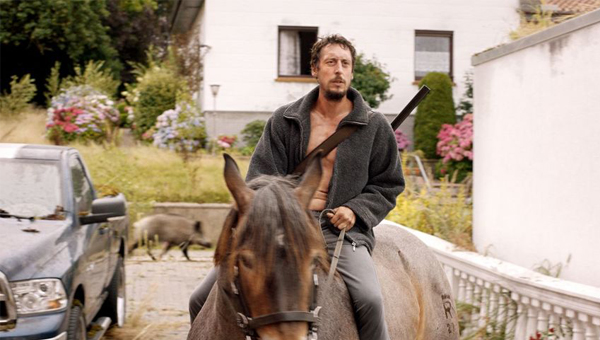 Ulrich Köhler’s IN MY ROOM details the terror and the implications of waking up to find that you are the last person on earth – or more precisely, almost the last person. The film begins in the midst of a political press conference, as seen through the lens of main protagonist Armin’s (Hans Löw) camera. What quickly becomes apparent is that Armin has systematically confused the camera’s on and off settings, recording footage only between takes, while eliding the press call and interviews entirely. This clever opening gambit, and the scenes that follow, establish incompetent camera operator Armin as a middle-aged man stuck in a twenty-something lifestyle of partying and failed sexual conquests.
Ulrich Köhler’s IN MY ROOM details the terror and the implications of waking up to find that you are the last person on earth – or more precisely, almost the last person. The film begins in the midst of a political press conference, as seen through the lens of main protagonist Armin’s (Hans Löw) camera. What quickly becomes apparent is that Armin has systematically confused the camera’s on and off settings, recording footage only between takes, while eliding the press call and interviews entirely. This clever opening gambit, and the scenes that follow, establish incompetent camera operator Armin as a middle-aged man stuck in a twenty-something lifestyle of partying and failed sexual conquests.
More significantly, the missing camera footage also presages the film’s subsequent narrative twist, as Armin awakes one morning to find that everyone around him has inexplicably vanished. Some of the most powerful moments of the film come as Armin’s dawning awareness of this mass disappearance is slowly revealed: an absent petrol station cashier, motorbikes scattered like skittles across a motorway, a party cruise boat drifting impassively down the river. The grim reality of Armin’s new situation is accentuated by a muted colour palette of dull greys and muddy browns, its realist aesthetic unflinching in its depiction of a failed suicide attempt and its aftermath.
While this ‘last man on earth’ scenario is a staple of dystopian science fiction cinema—from THE WORLD, THE FLESH AND THE DEVIL (1959), A BOY AND HIS DOG (1975) and THE QUIET EARTH (1985) to 28 DAYS LATER (2002) and OBLIVION (2013) – Köhler’s film places the emphasis elsewhere, focusing on the possibilities for re-invention outside of social constraints. In an astonishing physical transformation, we find that the previously unfit Armin has been reshaped into a lean, mean, hunting machine: a modern-day Robinson Crusoe who has learned to ‘live independently’, in harmony with the beasts of the field and the passing of the seasons. In sharp contrast to the insipid dullness of the first act, these scenes – to which Köhler refers as the ‘Paradise’ part of the film—invite spectators to share in the rhythmic, sensory pleasures of Armin’s experience, which is here rendered in rich greens and warm golds. Köhler balances a sense of Armin’s oppressive, definitive aloneness with the pleasures that are derived from the rituals by which he manages to stay alive, and it is here that the film is at its most original and compelling.
A subsequent plot development introduces a beautiful young Italian woman (Elena Radonicich) into the equation, diverting the film into what feels like much more predictable territory. Much to Köhler’s credit, IN MY ROOM’s conclusion manages to overturn many of the expectations that might be formed from the ‘new Adam and Eve’ scenario. Overall, it is an inventive take on what it means to learn to live life over again, and on the limits and virtues of ultimate solitude.

